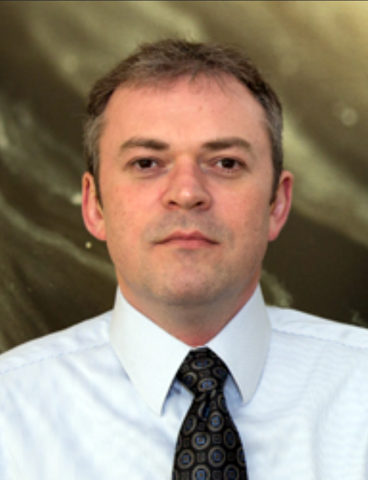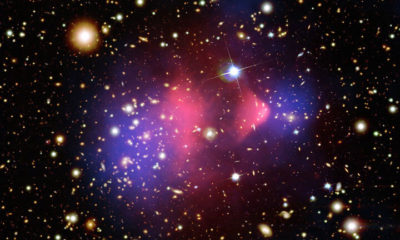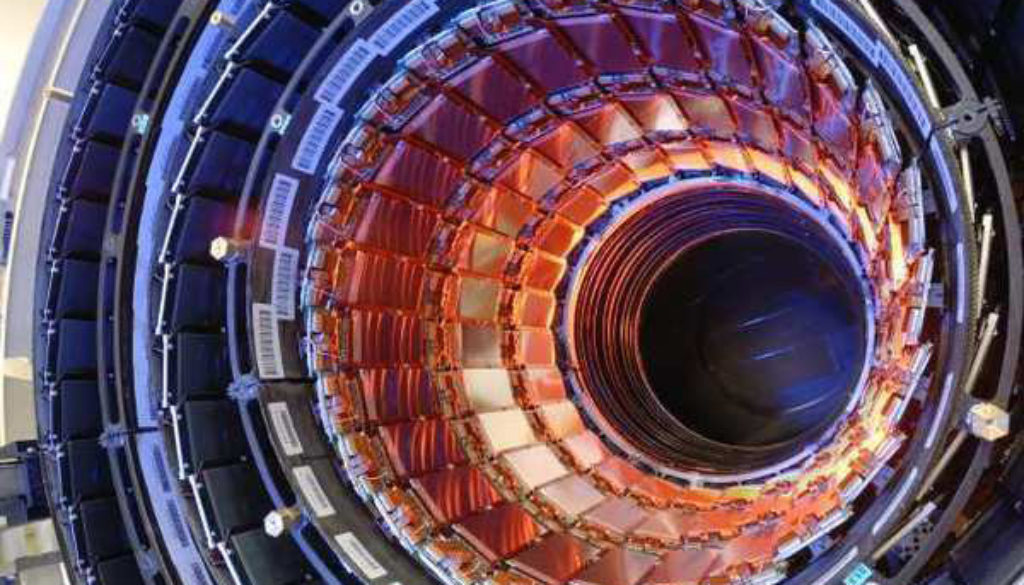Texas A&M Collider Physics, Theory, Dark Matter Research Projects Earn Department of Energy Funding
Three Texas A&M University projects are among 64 university research awards announced earlier this summer by the U.S. Department of Energy (DOE) as part of a $132 million high energy physics-focused funding package aimed at advancing knowledge of how the universe works at its most fundamental levels.
Texas A&M physicist Rupak Mahapatra received funding for two proposals, while the Texas A&M Collider Physics group — a collaboration of six principal investigators led by Texas A&M physicist Alexei Safonov — also earned an award for their collaborative proposal.

Texas A&M is one of 53 U.S. institutions of higher learning across the nation featuring scientist who received funding support for projects that include both experimental and theoretical research spanning such topics as the Higgs boson, neutrinos, dark matter, dark energy and the search for new physics.
DOE officials note that, in addition to serving as a cornerstone of America’s science efforts, high energy physics plays a major role in nurturing top scientific talent and building and sustaining the nation’s scientific workforce. It also provides a deeper understanding of how our universe works at its most fundamental levels.
“High energy physics research improves our understanding of the universe and is an essential element for maintaining America’s leadership in science,” said Under Secretary for Science Paul Dabbar. “These projects at 53 different institutions across our nation will advance efforts both in theory and through experiments that explore the subatomic world and study the cosmos. They will also support American scientists serving key roles in important international collaborations at institutions across our nation.”

In the ongoing search for tangible evidence of the dark matter that makes up nearly three-quarters of our universe, Mahapatra and his Texas A&M research group have developed a low-threshold hybrid detector technology capable of detecting nuclear recoil events — possible signals of the tiny particles comprise dark matter — via their cryogenic silicon detectors at the heart of the SuperCDMS dark matter search experiment. With the additional funding provided for his proposal, “Hybrid Phonon-mediated Highvoltage Detectors for WIMP Search and Coherent Neutrino Scattering Experiments,” Mahapatra and his team, which includes fellow Texas A&M physicist Nader Mirabolfathi and his expertise in cryogenic detector characterization and design, will work to improve upon these detectors, from their shaping and sensing capabilities to related data analysis.
“This technology has the potential to significantly enhance the sensitivity of dark matter and coherent neutrino scattering experiments in comparison to current technologies, which give up discrimination at low recoil energies,” Mahapatra said.
In a second funded project, “Magnetic Avalanche Detector using Single-Molecule Magnets for Dark Matter and Neutrino Detection,” Mahapatra and co-principal investigator Michael Nippe from the Texas A&M Department of Chemistry will explore and evaluate currently available single-molecule magnets (SMMs) in an effort to experimentally determine their operational stability and energy thresholds at the extremely cold temperatures required to detect dark matter.

“The detection of a single quantum of energy with high efficiency and low false positive rate is of considerable scientific interest, from serving as single quantum sensors of optical and infra-red photons to enabling the direct detection of low-mass dark matter,” Mahapatra said. “While it is scientifically challenging to develop such sensors, we look forward to having the opportunity, thanks to additional Department of Energy support.”
The DOE award builds on previous research made possible by funding Mahaptra and Nippe received through the College of Science’s Strategic Transformative Research Program (STRP) that provided support for Mahapatra’s graduate student Hao Chen, who earned his Ph.D. last December.
“Securing this funding showcases how close scientific interactions between departments can create new research directions, and we thank the College of Science for early seed funding through the STRP mechanism,” Nippe said. “This is an exceedingly ambitious and exciting project that combines concepts and techniques from physics, chemistry and materials science, with the ultimate goal of establishing a future detector technology. We already have convincing proof-of-principle results, and we look forward to developing this research in the future.”
Texas A&M’s third funded project, “High Energy Physics Research at Texas A&M University,” is a two-part effort featuring Safonov and co-principal investigators Bhaskar Dutta, Ricardo Eusebi, Teruki Kamon, Christopher Pope and Louis Strigari and their ongoing collaborative work on a wide range of theoretical and experimental topics in particle physics. The combined group includes more than 30 people, including faculty, researchers, engineers and both graduate and undergraduate students.
In the theoretical particle physics realm, Dutta and Strigari are working to understand the new physics that may be extracted from neutrino and dark matter experiments, not only at CERN’s Large Hadron Collider (LHC) but also in the ongoing COHERENT experiment, the upcoming DUNE experiment, and both direct and indirect detection dark matter searches. Dutta, who holds the Mitchell-Heep Chair in High Energy Physics and serves as director of the Mitchell Institute, is working on models that describe the universe when it was less than few micro-second old and also constructing models for dark matter, neutrino interactions and flavor anomalies. Strigari is using simulations to model how dark matter is distributed in galaxies and throughout the universe while gaining new insight about the particle nature of dark matter in the process. For his part, Pope, who holds the Stephen Hawking Chair in Fundamental Physics, is focusing on symmetry properties of black holes in supergravity and string theory in addition to new conserved quantities in general relativity in the region near infinity to which light rays travel.
“A unique strength of our group of theorists is the breadth and diversity of the expertise and research directions each of them lead,” Safonov said. “Such breadth not only fosters collaborative work and leads to new non-trivial ideas at the very forefront of modern theoretical physics, but also fosters collaboration with their experimental colleagues. The DOE award funds will help to support postdoctoral researchers and graduate students working with the group.”
Meanwhile, experimental physicists Eusebi, Kamon and Safonov spearhead the Texas A&M collider physics program, which carries out its primary research through the Compact Muon Solenoid (CMS) experiment at the LHC that smashes proton beams at near the speed of light to recreate conditions in the early universe. Their portion of the DOE funding will support this long-range endeavor incorporating data analysis, development of new analysis techniques, and detector operations and upgrades in their ongoing search for new physics in the Higgs domain, including extended Higgs sectors, hidden sectors and supersymmetry-inspired scenarios with ties to cosmology.
“Since the groundbreaking 2012 discovery of the Higgs boson that our group contributed to by analyzing the CMS data, the focus is on searching for evidence of new Higgs particles suggested to explain the striking matter-antimatter asymmetry in the universe and signals of new gauge interactions that may yield clues to the nature and origin of dark matter,” Safonov said. “This next adventure will span the coming decade and require major upgrades to the CMS detector, with the CMS experiment expected to log 1,000 times more data than what was used for Higgs boson observation in the pursuit for discovery of those rarer signals. Members of the Texas A&M CMS team are playing major roles in these upgrades with the funding support of the DOE, the National Science Foundation and Fermilab — contributions that will be further strengthened by the new DOE award funds.”
In explaining the motivation for new Higgs bosons searches as one of the directions his team is pursuing, Safonov notes that while the Higgs discovery has been a resounding confirmation of the Higgs mechanism of generating masses for fundamental particles predicted by the Standard Model, the value of the Higgs boson mass measured by the LHC experiments suggests that the universe we are living in is not truly stable. Although its lifetime is very substantial, Safonov says it remains unsettling that, at any time, the whole world may spontaneously come to an end. Discovery of new Higgs bosons that his team is pursuing could provide new clues on the stability of the vacuum while helping to narrow down the timeline on the universe’s ultimate fate.
All projects approved for funding this year were selected by competitive peer review under the DOE Funding Opportunity Announcement for Research Opportunities in High Energy Physics, sponsored by the Office of High Energy Physics (HEP) within the DOE Office of Science.
# # # # # # # # # #
About Research at Texas A&M University: As one of the world’s leading research institutions, Texas A&M is at the forefront in making significant contributions to scholarship and discovery, including that of science and technology. Research conducted at Texas A&M represented annual expenditures of more than $952 million in fiscal year 2019. Texas A&M ranked in the top 20 of the National Science Foundation’s most recent Higher Education Research and Development survey (2018), based on expenditures of more than $922 million in fiscal year 2018. Texas A&M’s research creates new knowledge that provides basic, fundamental and applied contributions resulting, in many cases, in economic benefits to the state, nation and world. To learn more, visit Research@Texas A&M.
-aTm-
Contact: Shana K. Hutchins, (979) 862-1237 or shutchins@science.tamu.edu; Dr. Rupak Mahapatra, (979) 229-4196 or mahapatra@physics.tamu.edu; or Dr. Alexei Safonov, (979) 845-1479 or safonov@tamu.edu
The post Texas A&M Collider Physics, Theory, Dark Matter Research Projects Earn Department of Energy Funding appeared first on Texas A&M College of Science.
